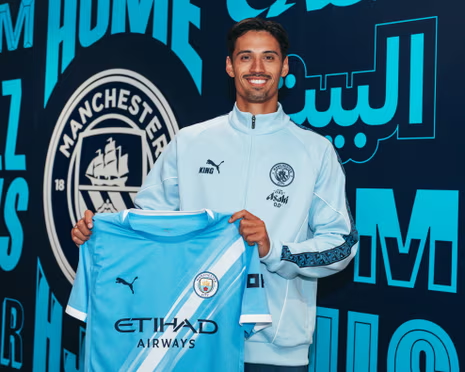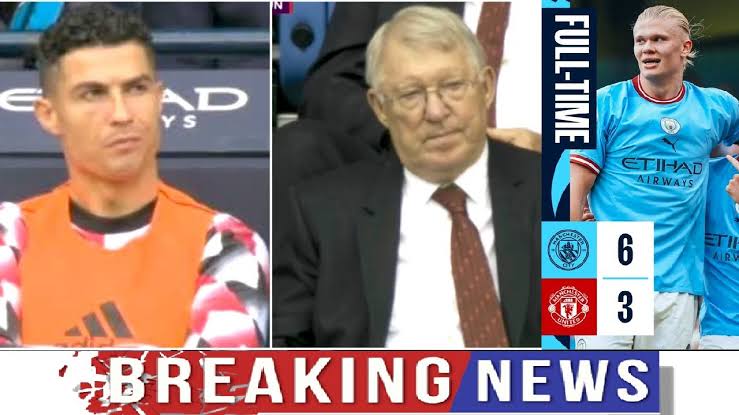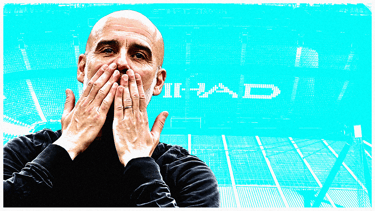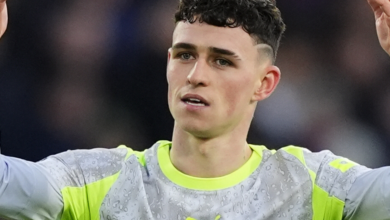Tijjani Reijnders shirt number confirmed as forgotten £45m signing loses squad spot

The football world rarely stands still, but even by modern transfer standards, Manchester City’s acquisition of Tijjani Reijnders from AC Milan represents a fascinating piece of business that deserves deeper examination. The £46.3 million deal, announced on June 11th, 2025, brings one of Europe’s most promising midfielders to the Etihad Stadium, where he’ll don the prestigious number 4 shirt previously worn by club legend Vincent Kompany.
But this transfer story goes far beyond mere numbers and price tags. It’s a tale of strategic planning, tactical evolution, and the relentless pursuit of excellence that has defined Pep Guardiola’s Manchester City project. More intriguingly, it’s also a story about the casualties of such ambition, with Kalvin Phillips becoming the forgotten £45 million signing who now finds himself without even a squad number.
The Dutch Maestro: Understanding Tijjani Reijnders
To truly appreciate what Manchester City have acquired in Reijnders, we need to understand the player they’re getting. The 26-year-old Dutch international emerged from relative obscurity to become one of Serie A’s most consistent performers during his two-year stint with AC Milan. His statistics from the 2024/25 season tell a compelling story: 15 goals and 5 assists in 54 appearances across all competitions. These numbers, impressive as they are, only scratch the surface of his contribution.
Reijnders possesses that rare combination of technical ability and physical presence that modern football demands. Standing at 6’1″, he brings aerial threat and defensive solidity, while his first touch and passing range mark him as a player comfortable in possession. His versatility allows him to operate in multiple midfield roles, from the deeper-lying playmaker position to a more advanced attacking midfielder role.
What made Reijnders stand out during Milan’s disappointing 2024/25 campaign was his consistency. While the Rossoneri struggled to an eighth-place finish in Serie A, failing to qualify for European competition, Reijnders remained one of the few bright spots. His ability to maintain performance levels even when the team around him was struggling speaks volumes about his mentality and individual quality.
The Dutch international’s journey to Manchester City hasn’t been straightforward. Unlike many of his contemporaries who moved through Europe’s elite academies, Reijnders took a more circuitous route. His development in the Netherlands prepared him for the physical and tactical demands of top-level football, but it was his move to Italy that truly showcased his potential on the grand stage.
Pep’s Latest Chess Move: Tactical Implications
Pep Guardiola’s fascination with Reijnders isn’t difficult to understand when viewed through the lens of his tactical philosophy. The Catalan coach has always prized players who can operate in multiple positions while maintaining technical excellence, and Reijnders fits this profile perfectly.
City’s midfield has undergone significant evolution in recent years. The return of İlkay Gündoğan added experience and creativity, while the presence of Rodri provides the defensive anchor that allows more adventurous players to flourish. Nico González brings youth and energy, and Bernardo Silva continues to be the versatile catalyst who can drift between positions. Into this mix comes Reijnders, whose profile suggests he could fill multiple roles within Guardiola’s system.
The timing of this signing is particularly intriguing. Manchester City are preparing for the FIFA Club World Cup, where they’ll face international opposition with different tactical approaches. Having a player like Reijnders, who has experience adapting to various styles of play, could prove invaluable in these high-stakes encounters.
Guardiola’s comments about following the player since his Barcelona days reveal the long-term thinking behind this acquisition. “I’ve followed him since he was coaching Barcelona with Lionel Messi,” Reijnders said about his new manager. “How he played there and how he brought it here is something that made me really excited to play for Manchester City.” This mutual admiration suggests a partnership that could yield significant results.
The tactical flexibility that Reijnders brings cannot be overstated. In Guardiola’s system, midfielders are expected to be comfortable receiving the ball under pressure, capable of playing intricate passing combinations, and intelligent enough to recognize when to press and when to drop off. Reijnders’ Serie A experience, where tactical discipline is paramount, has prepared him well for these demands.
Moreover, his goal-scoring record from midfield adds another dimension to City’s attacking play. With 15 goals last season, he demonstrated the ability to arrive in the box at crucial moments – a skill that could prove vital in tight Champions League encounters or crucial Premier League matches where games are decided by fine margins.
The Number 4 Legacy: Pressure and Expectation
The decision to hand Reijnders the number 4 shirt carries significant symbolic weight. This jersey was worn by Vincent Kompany during some of Manchester City’s most successful years, including four Premier League title wins. Kompany’s leadership, defensive solidity, and ability to score crucial goals made him a club legend, and anyone wearing his former number inevitably invites comparisons.
For Reijnders, this represents both opportunity and pressure. The number 4 shirt at Manchester City isn’t just a squad number; it’s a statement of intent from the club about the role they expect him to play. By giving him Kompany’s former number, City are signaling their belief that he can become a similarly influential figure.
The psychological aspect of this decision shouldn’t be underestimated. Wearing a legendary player’s number can either inspire or intimidate, depending on the individual’s mentality. Reijnders’ willingness to accept this responsibility suggests confidence in his own abilities and an understanding of the expectations that come with playing for Manchester City.
Historically, midfield players who have thrived under Guardiola have possessed certain common traits: intelligence, adaptability, and the ability to remain calm under pressure. Reijnders’ performances in Serie A, particularly during Milan’s difficult season, suggest he possesses these qualities in abundance.
The Kalvin Phillips Dilemma: A £45 Million Casualty
Perhaps the most telling aspect of Reijnders’ arrival is what it means for Kalvin Phillips, the former Leeds United midfielder who joined City for £45 million in 2022. Phillips’ Manchester City story serves as a cautionary tale about the unforgiving nature of elite football and the challenges of adapting to Guardiola’s demanding system.
When Phillips arrived from Leeds, he was considered one of the Premier League’s most promising defensive midfielders. His performances for England during the 2020 European Championship had caught the attention of Europe’s top clubs, and his move to City seemed like a natural progression. However, football rarely follows expected narratives.
Phillips struggled to adapt to Guardiola’s tactical demands and found himself competing with Rodri for the defensive midfield position. The Spanish international’s superior technical ability and understanding of Guardiola’s system made him virtually undroppable, leaving Phillips on the periphery. A loan spell at Ipswich Town during the 2024/25 season was meant to provide regular playing time and help him rediscover his form, but it appears to have done little to change his standing at City.
The fact that Phillips now finds himself without a squad number following Reijnders’ arrival speaks volumes about his current status within the club. In modern football, where squad numbers carry significance beyond mere identification, being left without a number is perhaps the clearest indication that a player’s time at a club is coming to an end.
This situation raises broader questions about Manchester City’s transfer strategy and the challenges facing players who struggle to adapt to Guardiola’s system. Phillips joins a list of talented players who have found it difficult to establish themselves at the Etihad Stadium, highlighting the gulf between being a good player and being the right player for City’s specific tactical approach.
Summer Reinforcements: Building for Multiple Fronts
Reijnders’ arrival is part of a broader summer recruitment drive that has seen Manchester City add four new players to their squad. Alongside the Dutch midfielder, City have signed Rayan Ait-Nouri (number 21), Rayan Cherki (number 29), and Marcus Bettinelli (number 13), each addressing specific needs within the squad.
This level of activity suggests that City are preparing for a campaign that will see them compete on multiple fronts. The Club World Cup adds another competition to an already demanding schedule, and the depth these signings provide could prove crucial in managing player fatigue and maintaining performance levels throughout the season.
Ait-Nouri’s arrival addresses City’s need for additional fullback options, providing competition and cover for existing players. His pace and attacking instincts align with Guardiola’s preference for fullbacks who can contribute in the attacking third. Cherki brings creativity and flair to the forward positions, offering Guardiola another option in the wide areas or as a central attacking midfielder.
Bettinelli’s signing might seem less glamorous, but goalkeeper depth is crucial for any team competing at the highest level. His experience and reliability provide insurance should City’s first-choice goalkeepers face injury or suspension.
The integration of these new signings will be fascinating to observe. Guardiola has a track record of gradually introducing new players to his system, allowing them time to understand the tactical nuances before expecting peak performance. This approach has generally served City well, though it can be frustrating for players eager to make an immediate impact.
Club World Cup Ambitions: Testing New Combinations
The timing of Reijnders’ arrival, with the Club World Cup looming, provides an interesting backdrop for his Manchester City debut. The tournament, featuring the world’s best club teams, offers a unique opportunity to test new combinations and tactical approaches against varied opposition.
City’s opening match against Moroccan club Wydad AC on June 18th will likely provide Reijnders with his first taste of competitive action in a City shirt. The Club World Cup’s condensed format means that player fitness and squad depth become even more critical, making the Dutch midfielder’s availability particularly valuable.
The fact that City managed to register Reijnders for the tournament despite announcing his signing after the initial deadline demonstrates the club’s administrative efficiency. By submitting a deal sheet to the Premier League before the cutoff, they ensured that their new signing would be available for selection in what promises to be a prestigious competition.
For Reijnders personally, the Club World Cup represents an ideal introduction to life at Manchester City. The tournament’s unique atmosphere and high stakes will test his ability to perform under pressure while wearing the City shirt. Success in these early appearances could set the tone for his entire City career.
The Broader Context: City’s Continued Evolution
Reijnders’ signing must be viewed within the broader context of Manchester City’s evolution under Guardiola. Since the Catalan’s arrival in 2016, City have consistently refreshed their squad while maintaining the core principles that have brought them unprecedented success. The club’s ability to identify and integrate new talent while maintaining their competitive edge has been one of their greatest strengths.
The Dutch midfielder’s arrival also reflects City’s commitment to competing at the highest level across all competitions. With the Champions League remaining their primary objective, having players who can perform in high-pressure European matches is essential. Reijnders’ experience in Serie A, a league known for its tactical sophistication, suggests he possesses the attributes needed to succeed in such environments.
Furthermore, the signing demonstrates City’s global scouting network and their willingness to look beyond the obvious targets. While other clubs might have focused on more high-profile signings, City identified Reijnders as a player whose attributes align perfectly with their tactical requirements. This kind of strategic thinking has been a hallmark of their recent success.
Looking Ahead: Expectations and Potential
As Tijjani Reijnders prepares for his first season at Manchester City, the expectations are inevitably high. The combination of his transfer fee, his shirt number, and the current strength of City’s squad means that he’ll be expected to contribute meaningfully from the outset.
However, history suggests that patience might be required. Many of City’s most successful signings have taken time to fully adapt to Guardiola’s system. The tactical complexity and physical demands of the Premier League can challenge even the most talented players, and Reijnders will need time to find his rhythm.
The key to his success will likely lie in his ability to understand and execute Guardiola’s tactical instructions while bringing his own qualities to the team. His goal-scoring record suggests he can add a different dimension to City’s midfield, while his versatility provides Guardiola with additional tactical options.
For Manchester City, Reijnders represents another piece in their quest for continued dominance. His arrival strengthens their midfield options and provides cover for potential injuries or suspensions. In a season where they’ll compete in multiple competitions, this depth could prove decisive.
The story of Tijjani Reijnders at Manchester City is just beginning. Whether he becomes the next midfield star to flourish under Guardiola’s guidance or joins the list of talented players who struggled to adapt remains to be seen. What’s certain is that his journey will be watched closely by fans, analysts, and competitors alike.
In the unforgiving world of elite football, success is measured in trophies and performances under pressure. For Reijnders, the opportunity to learn from one of the game’s greatest coaches while competing for the world’s biggest prizes represents the challenge of a lifetime. His response to that challenge will define not just his own career trajectory, but potentially Manchester City’s continued success in their pursuit of football immortality.
The Reijnders era at Manchester City begins with the Club World Cup, but the real test will come in the months and years that follow. In a squad full of proven winners, the Dutch midfielder must quickly establish himself as a player worthy of the number 4 shirt and the expectations that come with it. The football world will be watching.















